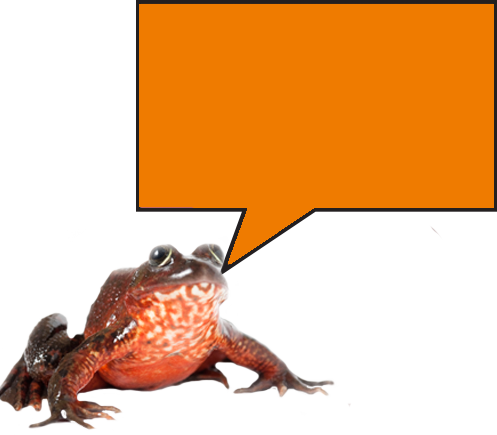The High Cost of Cheap Grazing
19th of Jun 2017

By Andy Kerr
Originally published May 26, 2017 on Andy’s blog site: www.andykerr.net
It costs more to feed a domestic housecat than to graze domestic livestock on federal public lands.
This has generally been the case since the early 1900s, when the federal government first required ranchers to pay a fee for grazing their livestock on millions of acres of federal land, primarily in western states.
Each January the USDA Forest Service and the USDI Bureau of Land Management calculate what the federal grazing fee will be for that year. For 2017, it’s 1.87/animal unit month (AUM), down from $2.11/AUM in 2016. An AUM is the amount of forage that a cow and calf can eat in one month. This below-market subsidized federal grazing fee applies only to the eleven western states. Fees for grazing on National Forest System lands in the Midwest and East are closer to market value.
The federal land management agencies calculate the fee based on an arcane formula that favors the federal grazing permittee at the expense of the federal taxpayer. The formula was in the Public Rangelands Improvement (sic) Act of 1978 (PRIA). That statute expired in 1985, but on Valentines Day in 1986 President Reagan issued an executive order that made the formula live on. The PRIA formula considers current private land grazing lease rates (though obviously not that much, as we shall see), beef cattle prices, and the cost of livestock production, all indexes compiled by the USDA. Because these indexes as used in the grazing fee formula could result in the grazing fee approaching $0/AUM, a floor of $1.35/AUM was included to prevent such an acute embarrassment.

Photo credits: Top – Cows trespassing on land closed to grazing to protect fish habitat on the East Fork Salmon River; photo by Pete Zimowsky. Above – An image courtesy of www.thewildlifenews.com showing damage caused to public lands from over-grazing.
While some argue that grazing uses federal land productively and that the grazing fee is fair, others argue that grazing damages public resources and that grazing fees are too low. When the Government Accountability Office looked into the matter in 2005, it found that the federal government recovered in fees less than one-sixth of what it expended on public lands grazing. And the Center for Biological Diversity estimated that in 2013 on average, the federal grazing fee was 6.72 percent of the price of non-irrigated forage from private lands.
In every state, the gap between the federal grazing fee and market prices for private land forage is stark and getting worse each year. We know this because each January, the USDA’s National Agricultural Statistics Service (NASS) publishes its estimate of private non-irrigated grazing fees for the previous year (see Figure 1). For instance, in Oregon in 2015, the private grazing fee was estimated to be $16.50/AUM, and in 2016, $17.00/AUM.
Welfare ranchers (a.k.a. federal grazing permittees) argue that it’s unfair to compare the federal grazing fee with the NASS fees and assert that the PRIA formula does approximate fair market value. They argue that on private lands, certain bovine amenities such as trough water and fences are routinely provided by the private landowner. In contrast, they say, they may have to haul their own water to federal lands, and livestock on the federal lands are more at risk of being eaten by wolves, bears, cougars, coyotes, and the like. (Hell, predators have to eat, don’t they?).
Does the PRIA formula in fact approximate fair market value? According to Wikipedia, fair market value (FMV) is “an estimate of the market value of a property, based on what a knowledgeable, willing, and unpressured buyer would probably pay to a knowledgeable, willing, and unpressured seller in the market.” Grazing fees don’t represent the fair market value of the forage because the federal land management agencies are pressured sellers—Congress requires the federal government to lose money on the endeavor.
The best way to determine the fair market value of federal grazing permits would be to auction them in a fair market. However, federal law limits federal grazing permits and leases to those in the livestock business, and there is no bidding among them. Once federal grazing permittees obtain their federal permit, either by inheritance or purchase, it’s generally theirs until they die or sell it.
Ensuring that the federal government received fair market value for the grazing of livestock would help defray the federal deficit, but do little to help public lands. Alas, most permittees would pay the higher fee (though griping a lot), as the cost of federal forage isn’t a particularly large portion of the cost of a ranch operation.
Bovine bulldozers have caused more harm to the public lands than mining or logging. The damage is harder for the public to see, as livestock grazing has been a chronic assault on the environment since the mid-1800s, rather than the acute assault of a clear-cut or a strip mine.
My honest opinion? The only proper grazing fee for federal public lands is actually $0/AUM, since there should be no grazing on federal public lands.
Andy Kerr is the Czar of The Larch Company and consults on environmental and conservation issues. The Larch Company is a for-profit non-membership conservation organization that represents the interests of humans yet born and species that cannot talk. He is best known for his two decades with the Oregon Wild (then Oregon Natural Resources Council), the organization best known for having brought you the northern spotted owl. Kerr began his conservation career during the Ford Administration.


